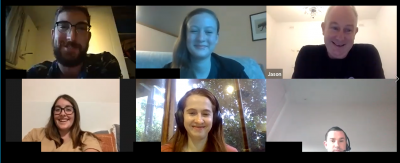DIY innovation putting the future into the hands of the people
DIY (Do-It-Yourself) innovations have often emerged from necessity, creativity, and grassroots problem-solving – putting solutions into the hands of the people that need them most.
From cost effective lighting solutions for isolated communities to Fab Labs helping people create innovative prototypes, these grassroots inventions prove that groundbreaking ideas don’t always come from billion-dollar Research and Development labs. Instead, they emerge from necessity, creativity, and community collaboration.
Just some of the DIY innovative movements that have revolutionised industries and communities include:
The Fab Lab and maker movement
Democratised access to manufacturing tools like 3D printers, CNC machines, and laser cutters. Fab Labs (originating from MIT’s Center for Bits and Atoms) enabled anyone with access to a local lab to prototype and build almost anything—from medical devices to solar-powered radios.
Solar Bottle Bulb (Liter of Light)
Provided sustainable lighting to off-grid communities using just a plastic bottle, water, and bleach.
Tiny Houses and Earthship biotecture
Reimagined sustainable housing and off-grid living via DIY tiny homes, and “Earthships” made from recycled materials (like tires, bottles, and cans), that promote sustainable architecture and self-sufficiency.
DIY media creation (YouTube, Podcasts)
Transformed media and education by decentralising content creation, creating independent educators, entertainers, and journalists, who have built careers and movements using low-cost equipment and platforms.
DIY innovation has also proven vital in creating solutions to environmental issues created through over consumption. One such innovation is FabBRICK, bricks created using textile waste, dreamt up by young architect Clarisse Merlet in 2019. Merlet came to this idea after becoming alarmed at the impact of the building industry on the environment. Her solution was creating a process by which textiles can be repurposed into useful and aesthetic building material, while helping t0 combat the staggering amount of waste created by fast fashion.
But even the most brilliant DIY innovation can fall flat without understanding its users. Which is where market research comes in—bridging the gap between creativity and impact.
This is done by:
Identifying real needs
Innovations like the “Liter of Light” succeeded because it directly addressed a major pain point of energy poverty. Market research—through surveys, ethnographic studies, or focus groups—helps innovators align with urgent user needs rather than solving problems that don’t exist.
Understanding user behaviour
While an innovation might be technically brilliant, larger consumer or community adoption depends on understanding how the intended audience will use it. Research into user behaviour ensures innovations fit seamlessly into people’s lives – providing the maximum benefit.
Sizing the opportunity
DIY projects often start small—but market research helps estimate whether the potential is niche or global. Knowing the size of the addressable market can determine whether to keep a project local or pursue large-scale funding.
Refining design & usability
DIY innovators sometimes overlook usability. Research techniques like usability testing, interviews, and observational studies highlight friction points—leading to more intuitive, user-friendly solutions.
Building credibility and attracting partners
For DIY projects to gain funding, NGO partnerships, or government support, innovators need data. Market research provides evidence of demand and impact, which builds trust with stakeholders.
While creative problem solving and ingenuity can come from anywhere, without the proper insights, your brilliant solution isn’t going to have the best chance at its maximum impact. By combining DIY ingenuity with structured insights into needs, behaviours, and adoption patterns, innovators can ensure their solutions really pack a punch beyond the workbench.
Think your business or organisation could do with some insights? Contact us here.




